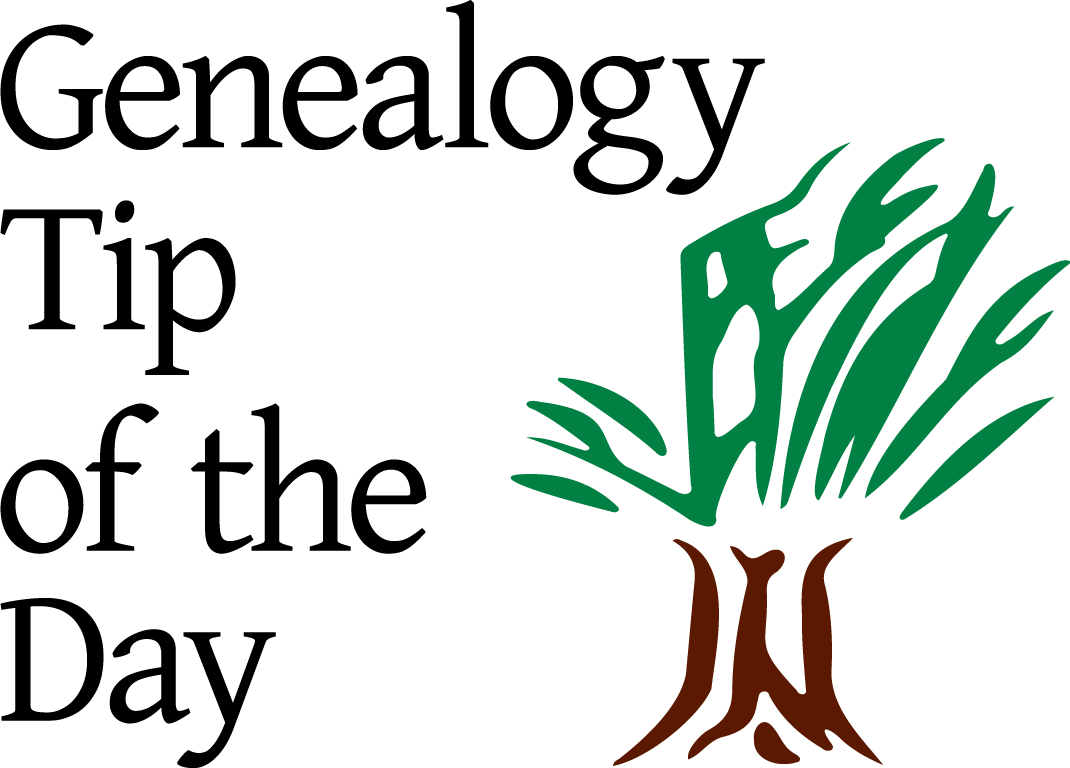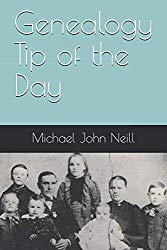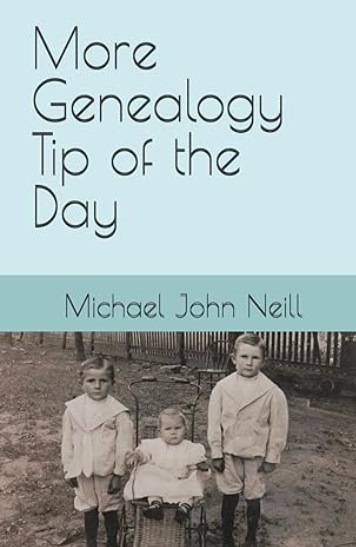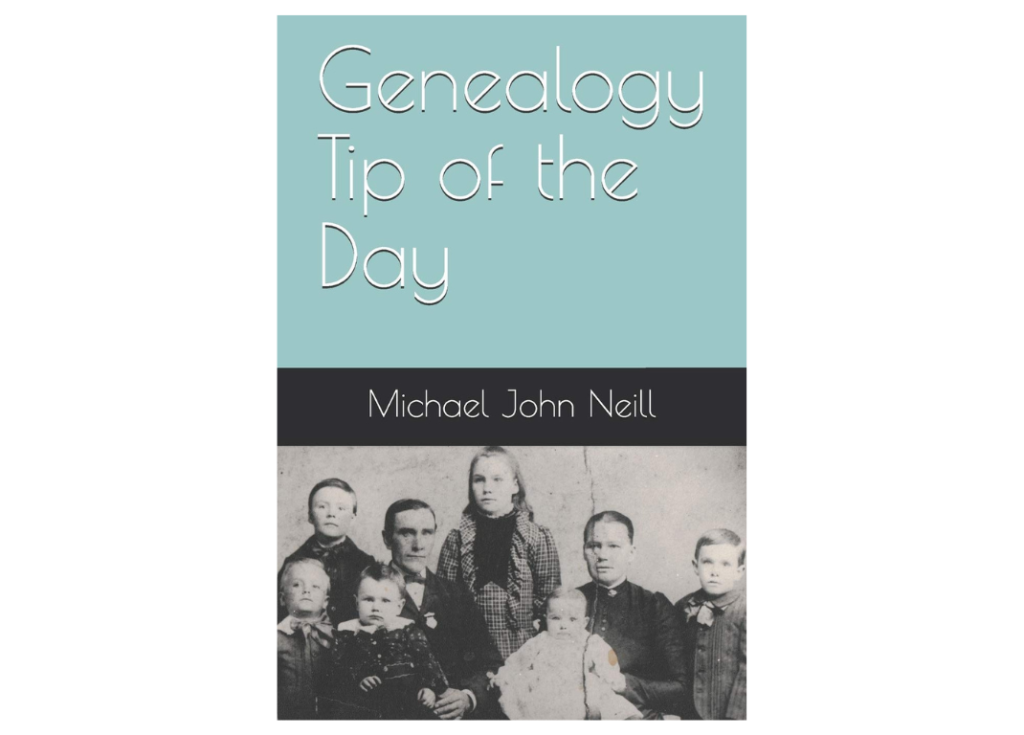Our goals here at Genealogy Tip of the Day are simple for the most part. They are generally to get readers thinking about: the research process what they find analyzing what they find their assumptions about research and their ancestors terminology and language used in records the history, culture, and environment in which their ancestors lived And we try to be short—that’s sometimes the difficult part. Tips are not meant to be verbose or lengthy discussions. The intent is to make people aware or to remind them of a topic, concept, term, etc. Longer discussions are posted on my Rootdig blog. But we are thankful for all who participate in Genealogy Tip of the Day in any way, shape, or form (including our Facebook page)–even if you don’t purchase a book. And thanks […]
Ultimogeniture is an inheritance practice where the right of inheritance belongs to the youngest child (usually limited to the youngest son). It was practiced in some areas of Europe. It is in contrast to primogeniture. That is where the oldest child has the right of inheritance–again usually the oldest son.
When creating a citation for a packet of court papers, it’s helpful to think of how one got to a specific page in the first place. Generally speaking that includes: The box, drawer, or storage item containing the packet of papers. You have to get to the right box or drawer again. There may be other packets in the same storage container. Information on the outside of the packet which distinguishes one packet from another. This is usually the name of the case at the very least and perhaps a case number. You have to get to the right packet of papers again so this is important. The specific document (perhaps more than one actual piece of paper) within the file. Documents may be named, particularly longer ones […]
A relative passed away in the last few years. There’s no online mention of her death. She’s not in any of the online databases that might mention a date of death for her and, at this point, my only knowledge of her date of death comes from an email from a relative. What do I do? I cite the email. I’ve changed some details in this sample citation to the 2020 death of Luella Ottoman, but it’s based on the format in Evidence Explained. Firstname Lastname, Los Angeles, California, [(e-address for private use),] to Michael John Neill, e-mail, 1 February 2024, “checking email,” Personal Correspondence Folder, Neill Research Files, privately held by Neill, [(mjnrootdig@gmail.com, street address for private use,] Galesburg, Illinois, 2023. Firstname Lastname is a nephew of […]
Apparently in 1978, I entered the handwriting and arithmetic competition at the local county fair. This was only discovered by searching for myself in digital images of my local newspaper. There were a variety of other references to me as well–most of them were when I was in attendance at various family functions. Search for yourself as a child in local newspapers–especially if you grew up in an area with small town newspapers that published every piece of gossip they could get. Those references may help you track down missing relatives and cause you to learn a little something about yourself. Even if your handwriting today would not win the competitions it might have when you were ten years old.
It can be tedious to wade through the socials columns in old newspapers, particularly if your relative was something of a social butterfly. But those references can be useful. A 1938 letter written to my grandmother by her niece mentions a couple with the last name of Braeden. That couple apparently socialized with the niece’s parents. I just did not have any more of a name than “Braeden.” A 1966 reference to the letter writer’s mother indicated that the mother had visited a Mrs. Albert Braeden. It’s a clue as to the couple referenced in the 1938 letter. It’s not 100% proof of their identity. But it is a start. Genealogical Publishing Company has announced the release of the new 4th edition of Evidence Explained. Check it out on their […]
If you can’t find your relative in a database, consider switching the first and last names. These kinds of errors are not all that unusual, particularly with individuals with non-English names. Genealogical Publishing Company has announced the release of the new 4th edition of Evidence Explained. Check it out on their website.
Do you have spare copies of a genealogy book? Do you know a library with a genealogy collection that would be interested in it? The Allen County Public Library’s Genealogy Collection did not have a copy of the 1982 Roots of the Family Fecht. I had two. My children are not going to want them. I now have one. The Genealogy Collection at the Allen County Public Library has the other. Don’t wait for your children to do these things. Cull your collection yourself. Genealogical Publishing Company has announced the release of the new 4th edition of Evidence Explained. Check it out on their website. Join Michael in Ft. Wayne!
A patronym is a last name derived from the first name of the father. The most common one, and the simplest one, is Johnson–son of John. In some cases the first name may be altered slightly to form the last name, but the essence is there.
It’s not your ancestor’s job to leave behind records. Many of them did good to survive from day to day and take care of themselves and others for whom they were responsible for. It’s your job as a genealogist to find what records you can, learn so that you understand completely what those records mean, report what you find accurately and clearly, and leave behind something about yourself. That’s a pretty tall order. It’s also not important how many ancestors your discover. There’s no prize for who finds the most ancestors or relatives. What matters is that you report their story as accurately as you can. It’s also good to share and preserve what unique records and materials you may have been lucky enough to acquire during your […]
One person’s view at one point in time. It’s always advised to not look at a will in black and white. Like all documents used in genealogy it was created for a specific purpose. In the case of a will, it was to provide instructions for how the executor should dispose of the property of the deceased. While a will may contain significant commentary about the individuals mentioned, that’s not the real purpose of the document. If an individual is not named in a parent’s will, it could be because that individual had already received property from the parent. It could also be because the writer of the will and the specific child had a falling out of sorts. That “falling out” could have been the result of […]
from a while back… A death certificate indicates that a relative was born Rush County, Indiana, on 23 December 1846. The tombstone indicates that the relative was born on 25 December 1846. The 1850 census indicates that the same relative was a native of Indiana and was three years of old at the time of the enumeration. That means that the person was born in either sometime in 1846 or 1847. It’s not additional evidence that the person was born specifically on 23 December 1846. It is consistent with that date of birth (which is good), but the census does not indicate that precise date of birth. Use the death certificate as the source for the 23 December 1846 birth in Indiana. Use the tombstone as the source […]
Generally speaking, a transcript is a complete exactly copy of a document–including exact spelling, grammar, and punctuation. An extract is a verbatim transcription of a portion of a document–preserving spelling, grammar, and punctuation (and usually enclosed in quotation marks). An abstract summarizes the content of a document. All three should include a citation to the document that was used to create the transcript, abstract, or extract.
It is great to know how to cite items in your personal collection of family history materials (pictures, letters, family Bibles, etc.), but what have you done to actually preserve or share those items with others? Keeping paper items in archivally safe materials is a great way to start, but making digital images of those items and sharing them is another. Knowing where to put the comma in a citation for a family letter is great, but if no one has ever seen a copy of that letter but you and you’ve made no attempt to share its contents, will that comma really matter?
Provenance is the chain of ownership of a historical item over time and details about the origin of that item. For some items, one may be only able to track the provenance back so far. When one has archival family items, documenting their provenance is advised before that information is lost forever.








Recent Comments